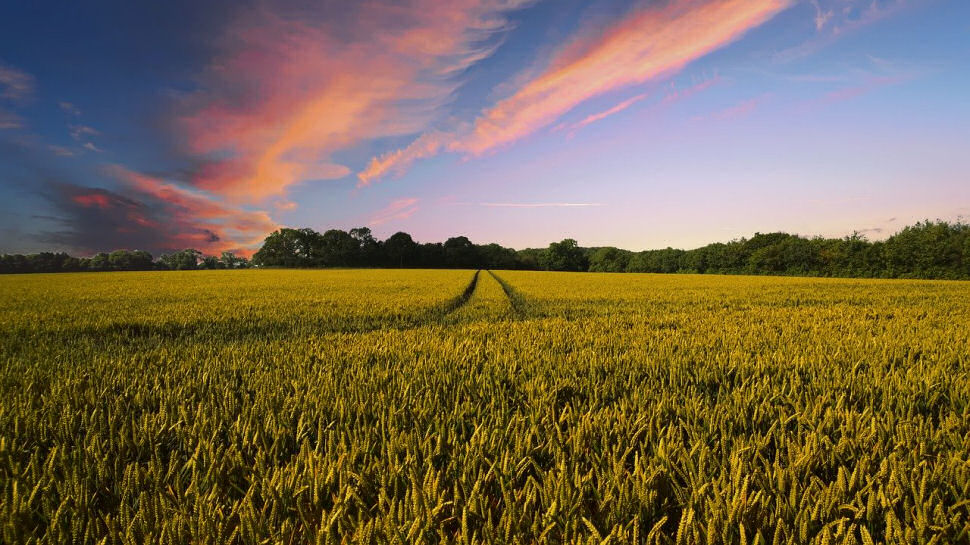
Connectivity plays a critical role in bringing people, ideas and opportunities together. In today’s digital world, it enables us to collaborate, innovate, and strengthen our communities and economies.
While countless people rely on connectivity to power their daily work, one essential group is often left out of the conversation: farmers.
Farmers work tirelessly to support society, playing a crucial part in our economy and daily lives. They produce the food, fuel, and fiber we rely on. Modern farming involves complex logistics, data management, and precise decision-making.
Senior Product Manager of Connected Fleet at John Deere.
From monitoring equipment performance and crop health to tracking weather patterns and market trends, farmers are navigating increasingly sophisticated operations.
Reliable connectivity is no longer optional, it’s essential. And it’s essential because with strong connectivity, farmers can work more efficiently, both in the field and in the office.
One of the most promising solutions to agriculture’s connectivity challenges is satellite communication (SATCOM). SATCOM is the use of artificial satellites to provide communication links between various points across the globe.
SATCOM offers a powerful and reliable way to deliver connectivity, even in the most remote areas where traditional cellular or broadband infrastructure is unreliable or unavailable. This makes it an ideal solution for agriculture, where operations often span vast and isolated areas.
Sign up to the TechRadar Pro newsletter to get all the top news, opinion, features and guidance your business needs to succeed!
Current state of connectivity in agriculture
According to a U.S. Department of Agriculture report, approximately 18% of U.S. farms lack access to the Internet. And, a 2021 National Farmers Union survey found that four in 10 farmers do not have adequate fast and reliable broadband necessary to run a modern farming business. These connectivity gaps are especially common in rural areas.
This lack of connectivity limits the adoption of innovative tools like autonomous equipment, precision agriculture solutions, and AI-powered analytics. As farmers continue to face growing challenges like labor shortages, rising costs, and unpredictable weather, reliable connectivity becomes even more essential.
Without it, farmers risk being left behind in a rapidly evolving industry where efficiency and productivity are key to resilience and growth.
Why SATCOM?
SATCOM has come a long way, evolving from low-bandwidth satellites to today’s high-speed, high-capacity systems. It works where cellular and terrestrial connections fall short, keeping farmers connected no matter how remote their operations are.
As the technology becomes more accessible, SATCOM is emerging as a practical, scalable solution for modernizing agriculture.
Both agriculture technology companies and satellite providers are investing heavily in solutions tailored specifically for agricultural needs. This is true not only in the U.S. but also globally in countries like Brazil, where the connectivity gap is even more pronounced.
Only 25% of Brazil’s agricultural customer base has reliable connections, despite the country’s crucial role in feeding 800 million people worldwide.
To address this, companies are deploying solutions that connect both new and retrofitted machines using satellite service and ruggedized satellite terminals, giving farmers access to connectivity that allows them to leverage innovative technologies.
SATCOM-enabled use cases in agriculture
In many areas, unreliable internet has limited access to modern farming tools. SATCOM is closing that gap by bringing connectivity to the field and unlocking more efficient operations. By connecting both new and existing machines, SATCOM enables a range of powerful applications, including:
Autonomous solutions: Many autonomous machines, such as tractors, rely on real-time data exchange to operate effectively. With SATCOM, farmers can remotely monitor a tractor’s location, performance, and job quality from a mobile device.
By offloading repetitive, time-consuming tasks, farmers can oversee multiple operations simultaneously, focus on higher-value work, and boost overall productivity, which helps to ease the impact of skilled labor shortages.
Machine-to-machine communications: Farms are complex environments with many moving parts. SATCOM allows machines to communicate directly and operate in coordination, minimizing overlap and missed areas for optimal coverage and efficiency.
For example, with stable connectivity, two sprayers can work simultaneously in the same field, sharing data to align their spray paths and eliminate gaps. Additionally, In-Field Data Sharing between combines enables the exchange of critical information between machines and back to the Operations Center for improved decision-making.
Remote monitoring and diagnostics: Farmers can access live data from equipment and fields, allowing for fast diagnosis of mechanical challenges or environmental obstacles. Remote troubleshooting can reduce costly downtime during critical planting or harvest windows.
Real-time data sharing: SATCOM enables consistent, real-time data sharing, allowing farmers to monitor, analyze, and optimize their work in real-time. This leads to better decision-making, greater efficiency, and the potential for higher yields and profits.
Business communications: With consistent and strong internet access, farmers can manage logistics, interact with trusted advisors and suppliers, and communicate seamlessly with their dealer from virtually anywhere.
Looking forward
As agriculture continues to embrace advanced high-tech solutions, SATCOM will be essential to supporting this future. Farmers play a crucial role in our society and deserve access to the same digital tools that drive progress in other industries.
By investing in satellite-based solutions, we can empower farmers with the tools they need to increase productivity and build more resilient operations. Supporting widespread adoption of SATCOM is more than a technological advancement, it’s a commitment to a stronger, more sustainable future for all.
We've featured the best online collaboration tool.
This article was produced as part of TechRadarPro's Expert Insights channel where we feature the best and brightest minds in the technology industry today. The views expressed here are those of the author and are not necessarily those of TechRadarPro or Future plc. If you are interested in contributing find out more here: https://www.techradar.com/news/submit-your-story-to-techradar-pro
Senior Product Manager of Connected Fleet at John Deere.
You must confirm your public display name before commenting
Please logout and then login again, you will then be prompted to enter your display name.